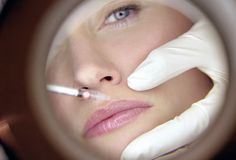ARE YOU A CANDIDATE FOR A FACELIFT?
I never thought I’d “have to” color my hair, tweeze a stray hair from anywhere but my eyebrows or actually need readers but those ships have already sailed. What this has taught me is to never say never when it comes to trying out beauty treatments or procedures.
We as women are expected to age gracefully, yet remain beautiful and youthful looking and for some, good genes, diligent skincare and sun protection are enough. Others add in minimal use of non-surgical procedures and that helps them find their happy place. And still others bring in the big guns. The truth is, no matter how well you take care of your skin, the underlying structures do change as we age. Fat below the skin that’s evenly distributed starts to thin out over time and shift downward so that skin is more lax with visible wrinkles and sagging. A combo of botulinum toxin injections, facial fillers and laser treatments can do a lot to help restore a more youthful look, but non-surgical treatments cannot reposition tissue that has sagged because of gravity. If you’re not getting enough results from over the counter and in-office non-surgical procedures or are finding it hard to justify the cost and time commitment of having to repeat temporary liquid facelifts (neurotoxin injections and filler injections combined) over and over again a proper facelift might be what you’re looking for.
If you have been “buying time” this way, be aware that studies have shown that a facelifts have much better long term results when performed on those who are younger and are performed as a corrective/maintenance hybrid so you might not want to wait. There’s a higher satisfaction rate for those that do it when they’re less than 50 years old and only showing minimal signs of facial aging vs. those that do it later. They tend to be able to hold onto their youthful looks and are happier with their results at least 10 years after the fact compared to those who wait longer to do it. A possible reason to support these results is that there’s less obvious post-operative changes while enabling patients to hold onto a more youthful look longer.
Your surgeon can assess if a facelift is right for you, but if you’re in relatively good health, are not severely overweight, and your skin has good elasticity even if your face and neck tissues might be lax, wrinkled or with jowls, chances are you’re a candidate.
Facelifts vary greatly depending on your aesthetic goals, your facial anatomy, the areas being treated and your preferences regarding risks, recovery and downtime. Before undergoing surgery, you must also be willing to consider the possibility of unexpected complications, possible scarring, numbness, a change in hairline, facial paralysis, nerve damage and other potential risks. If you still think a facelift might be the right answer for you, do schedule a consultation with a board certified plastic surgeon in your area who can discuss your options and the pros and cons of each with you so you can make an educated decision.
(featured image via pinterest)






Recent Comments